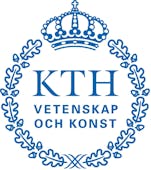
KTH Royal Institute of Technology

Since its founding in 1827, KTH Royal Institute of Technology in Stockholm has grown to become one of Europe’s leading technical and engineering universities, as well as a key centre of intellectual talent and innovation. We are Sweden’s largest technical research and learning institution and home to students, researchers and faculty from around the world dedicated to advancing knowledge.
KTH is working with industry and society in the pursuit of sustainable solutions to some of humanity’s greatest challenges: climate change, future energy supply, urbanisation and quality of life for the rapidly-growing elderly population. We are addressing these with world leading, high-impact research and education in natural sciences and all branches of engineering, as well as in architecture, industrial management, urban planning, history and philosophy. Almost two-thirds of the SEK 4 billion turnover relates to research.
Basic and applied research are performed side-by-side at KTH and interdisciplinary research is conducted in parallel with work in specific fields. This approach encourages versatile solutions and the innovative climate creates many opportunities to realise great ideas. Our educational programmes foster a new generation of engineers, architects, teachers and undergraduate engineers.
KTH embraces academia and the public and private sectors working together. We are part of extensive international research collaborations and participate in a large number of educational exchange or joint programmes with universities and colleges in Europe, the U.S., Australia, Asia and Africa.
Links
Displaying all articles






